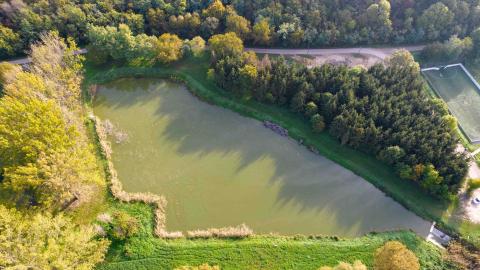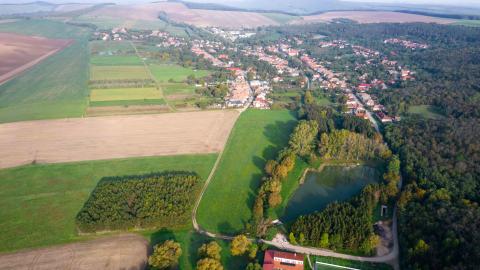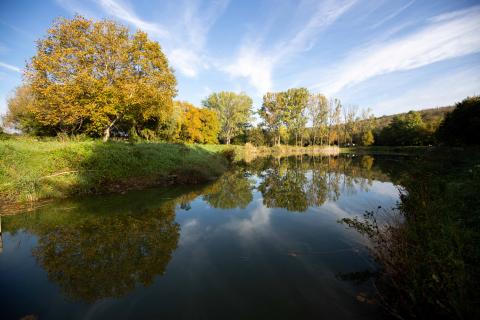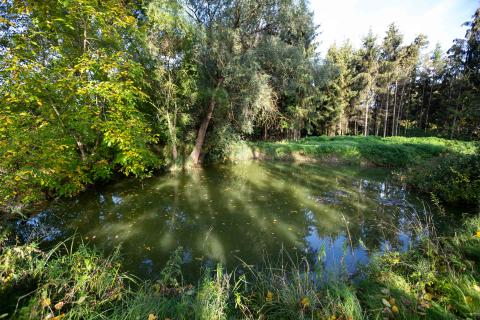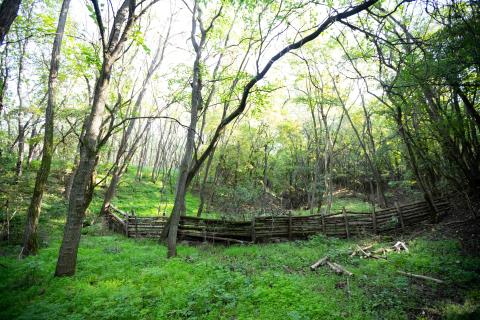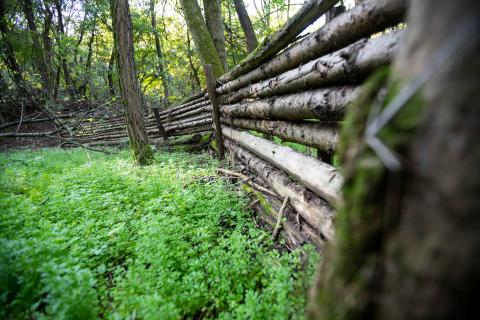
Adapting to climate change: flood control by deceleration and water retention

About this good practice
Püspökszilágy was one of the pilot sites in the LIFE-MICACC project representing a typical water risk situation in small municipalities in Central Europe which has been amplified by climate change. The goal was to tackle this challenge by using cheap and local assets to create natural water retention solutions.
The Szilágyi stream often caused flash floods, the sudden heavy rainfall and sedimentation caused serious damage to the infrastructure and residential properties of the area. The main goal was to reduce the risk of flash floods in Püspökszilágy by retaining water and sediment on the upper watershed, so that it may not reach the town while also preserving water resources for drier times.
In the area below the town, a lateral reservoir can absorb the water from flash floods, preventing flooding of the town. During the planning phase, the aim was to harmonize flood protection with the protection of nature, such as conserving the current population of animals and native plants.
Additionally, seven sediment control wooden dams were constructed in erosion trenches. These dams let the stream’s low water flow through the gaps, whilst at the time of flash floods they can retain high water flow (few hundred m3) and sediment. The dam only lets it flow through the gaps, so that the water can flow down slowly towards the town.
Expert opinion
Resources needed
The amount of financial resources used was 44.9 million HUF, which was funded by the LIFE-MICACC project.
Evidence of success
The total potential water retention capacity is 14000 m3. Approximately 15000 m3 can be retained in case of a heavy rain event.
On 14 June 2020 a flash flood and the inherent sediment was managed and regulated by the nature-based solution’s dams, causing no damage in Püspökszilágy. After the notice of probable high precipitation the municipality drained enough water from the lateral reservoir that it could absorb the high water flow. This incident proved that this solution is in fact, a success.
Potential for learning or transfer
It is a very simple and effective solution. It can have great value when transferred to another area. These sediment control wooden dams have multiple advantages when used to protect a settlement suffering from flash floods.
Locally processed wood can be used for the building of the dams which is a simple, cheap, easily implemented and transferrable solution which can prove to be useful at a similar location grappling with such problems as damage from flash floods.
Overall, this nature-based solution re-connects a previously regularly flooded area into the hydrological system, thus improving the microclimate and providing a suitable environment for water ecosystems and local recreation.
Further information
Good practice owner
You can contact the good practice owner below for more detailed information.

